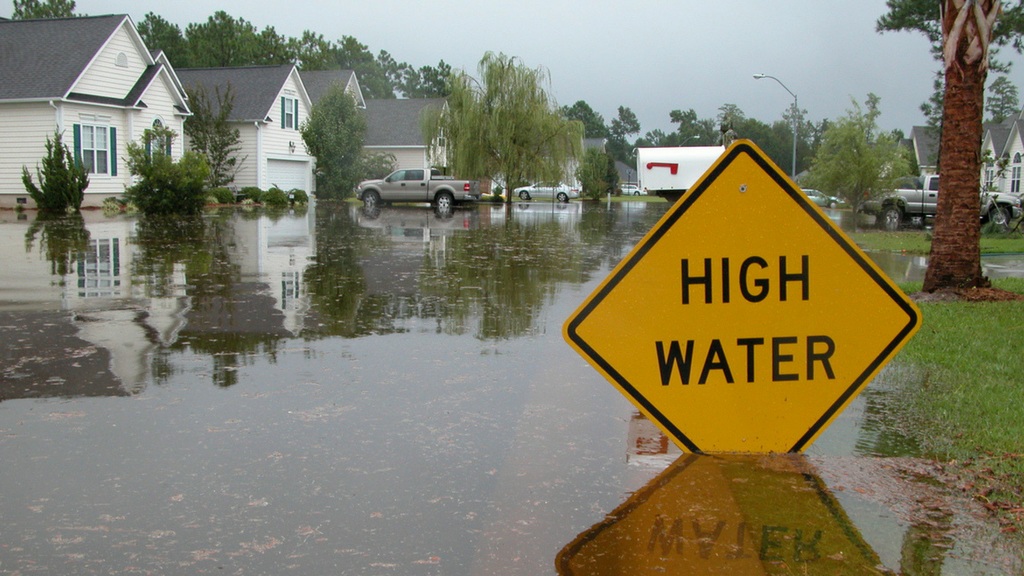What Is Flood Insurance: Flooding is one of the most catastrophic natural disasters that can result in irreversible harm to our lives and property. Floods can occur anywhere, whether or not you live in a high-risk flood zone. While severely damaging your home and possessions, they could even put your personal safety at peril.

The majority of typical home insurance policies do not often contain flood coverage, despite the fact that many homeowners may believe their current insurance policies already cover flood damage. In this situation, flood insurance is useful. We will discuss flood insurance in this article, including what it is, how it functions, and whether you should buy it.
What Is Flood Insurance?
Flood insurance is a type of coverage specifically designed to protect property owners against damage caused by flooding. It provides financial protection in the event of flood-related losses, including damage to the structure of your home, its contents, and even expenses incurred during the restoration process. Unlike typical homeowners’ indemnity policies, indemnity is usually a separate policy that must be purchased in addition to your existing coverage.
The National Flood Insurance Program (NFIP), administered by the Federal Emergency Management Agency (FEMA), is the primary source for indemnity in the United States. NFIP offers indemnity policies to homeowners, renters, and business owners in participating communities across the country. Private insurance companies may also offer indemnity, but their policies may differ in terms of coverage, pricing, and eligibility criteria.
Should You Buy Flood Insurance?
Deciding whether to purchase flood insurance is a crucial consideration for homeowners, particularly those residing in areas prone to flooding or located near bodies of water. Here are some key factors to help you make an informed decision:
Risk Assessment
Start by assessing your flood risk. Determine whether your property is located in a high-risk flood zone or an area prone to seasonal flooding. FEMA’s Flood Insurance Rate Maps (FIRMs) can provide valuable information about flood zones in your area. Keep in mind that even properties outside high-risk zones can still experience flooding, so it’s important to evaluate your risk comprehensively.
Mortgage Requirements
If you have a mortgage on your property and it is located in a high-risk flood zone, your lender may require you to purchase indemnity. Even if you are not legally obligated to have flood insurance, it’s worth considering for the protection of your investment.
Cost of Flood Damage
Assess the potential financial impact of flood damage to your property. Floods can cause extensive damage that can be expensive to repair or replace. Consider the cost of repairs, replacing damaged belongings, and temporary living arrangements. Compare this potential cost with the premiums associated with flood insurance to determine whether it is a worthwhile investment.
FEMA Assistance
In the event of a federal disaster declaration due to flooding, FEMA may provide disaster assistance to affected individuals. However, this assistance is typically in the form of loans that need to be repaid, rather than outright grants. Flood insurance, on the other hand, can provide you with immediate financial relief without the burden of repayments.
Peace of Mind
Perhaps one of the most significant benefits of flood insurance is the peace of mind it offers. Knowing that you have coverage in the event of a flood can alleviate stress and allow you to focus on recovery and rebuilding.
Tips on Buying Flood Insurance
When considering buying indemnity, it’s essential to make an informed decision. Here are some helpful tips to guide you through the process:
Evaluate your flood risk: Start by assessing your property’s flood risk. Look at FEMA’s Flood Insurance Rate Maps (FIRMs) to determine if your property is located in a high-risk flood zone or an area prone to seasonal flooding. As a result, This will help you understand the likelihood of flooding and the potential cost of coverage.
Understand coverage options: Familiarize yourself with the different types of indemnity policies available. Additionally, The National Flood Insurance Program (NFIP) offers two types of coverage: building property coverage and personal property coverage. Building property coverage protects the structure of your home, while personal property coverage covers your belongings. Review the coverage limits, deductibles, and exclusions to ensure they meet your needs.
Compare premiums: Obtain quotes from multiple insurance providers such as State Farm and Geico and compare their premiums. After that, Consider the cost of the coverage relative to your property’s value and the potential losses you could face. It’s also important to review the terms and conditions of each policy to ensure you are getting the best value for your investment.
Consult with an insurance professional: Seek guidance from an insurance agent or broker who specializes in indemnity. They can provide expert advice, explain policy details, and help you navigate through the buying process. Finally, Their knowledge and experience will be valuable in making an informed decision.
Review and update regularly: Regularly review your indemnity policy to ensure it aligns with your changing needs. As your property value or risk profile evolves, you may need to adjust your coverage accordingly. Lastly, Stay informed about any updates or changes to flood maps or insurance regulations that may affect your policy.
Conclusion
In conclusion, Flood insurance is a specialized type of coverage designed to protect homeowners, renters, and business owners against the financial impact of flooding. While it may not be necessary for everyone, it is essential to evaluate your flood risk, consider the potential costs of flood damage, and assess the benefits of coverage for your specific circumstances. Even if you live outside of high-risk flood zones, unexpected weather events can lead to flooding, making indemnity a prudent consideration.